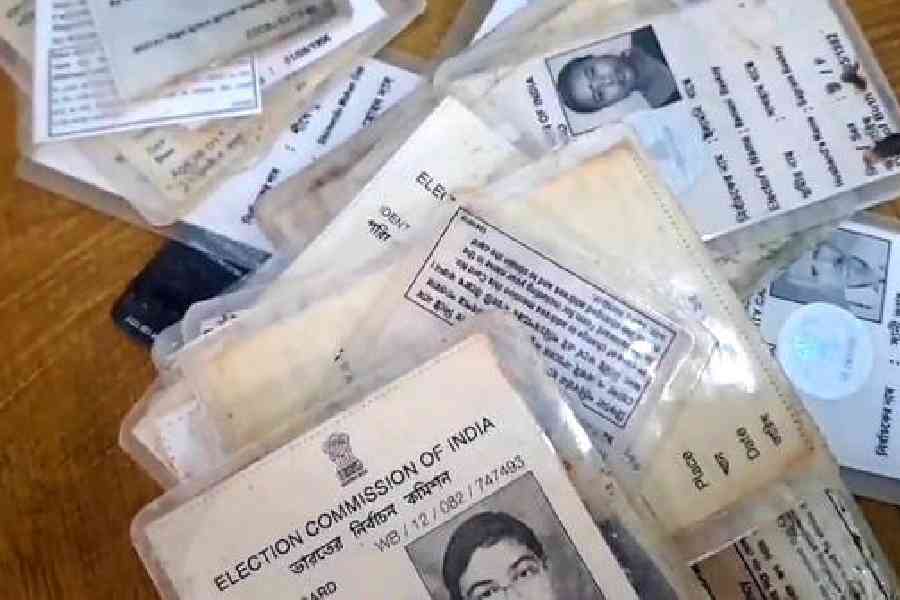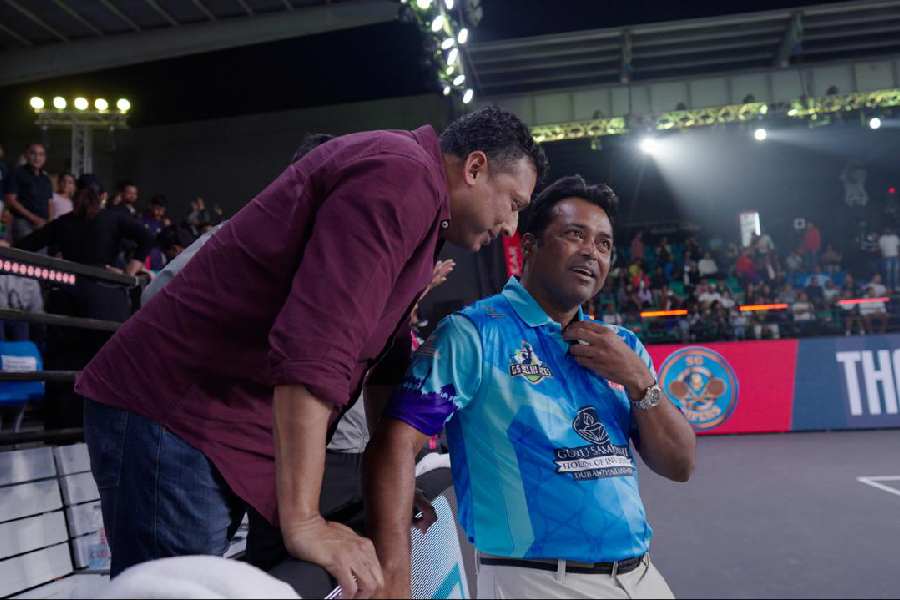

We stumble even before we can begin - "You perform reality?" Polite silence followed by, "We are calling the workshop The Everyday As Performance." The response comes from Amitesh Grover, a performance-based artiste.
It is around 7 in the evening and we are on the second floor of Coffee House, right across the street from Presidency University. Grover, who is from Delhi - assistant professor at the National School of Drama - is in Calcutta on invitation from Presidency's department of Performing Arts for the aforementioned three-day workshop.
He has conducted a session for the greater part of that day and has been part of a walk for the greater part of the night before. "We walked through C.R. Avenue, Harkata Goli, New Market...," rattles off Debaroti Chakraborty, assistant professor and faculty in charge of the workshop, punctiliously. The "we" constituted herself, Amitesh, students and cops.
But what of it? Night walks through the city have been happening for some time now. The next many minutes a seamless duet plays out between Amitesh and Debaroti; words and phrases such as "intervention", "performance of subversion", "body as a site of conflict" do the tango. The hum inside the venerable Coffee House climbs. The long-necked fans seem to hang lower as if straining to catch their words. Waiters slap-bang full cup and part saucer filled with tasteless brown liquid.
Our defences mount as Amitesh talks about Calcutta at night, so poor and vulnerable, highly gendered, suspicious of the student who is indulged by a city like Delhi, his curiosity embraced, fed even. A buzzer goes off, countdown to closing hour. And by the time the first beads of perspiration break out on Amitesh's forehead, we get the drift, almost, to everybody's relief.
As we understand it, this type of performance of the every day or night or reality or call it what you may, is really an encounter with the familiar. Bang, bang, bang. And there you have the familiar, made so very distant by the mobile and other gadgetry and the theatre of the social, the anti-social and social media, gut out. Or so we gather.
Is this kind of thing common in the performing arts, we turn to Debaroti. "No, definitely not common," she assures. And Amitesh starts to talk about another performance called Sleep from 2014. Much of this is difficult to understand at the conversational level, and as concepts go, they are so stark that they seem to teeter on the edge of reason. (Later, from the visuals on his website we learn that Sleep is a series. Part 1 is a participatory act, necessitates a home swap, followed by sharing the experience of sleeping in someone else's space. Part 2 is a documentary about a man who gives a guided tour of Delhi's Loha Pul, under which many of the Capital's homeless sleep. Part 3 involves co-sleeping on the Internet across time-zones - this is totally lost on us.)
There is so much happening countrywide, socially, politically, so much not happening fiscally, that against this wider context these experiments seem like self indulgent exercises, removed from all realities. We can't tell Amitesh as much but we ask what is the point of it, who is the audience, should not this kind of performance-based art be politicised. If the whole point is bang, bang, spill open gut, should that not apply to inured political sensibilities? Do none of his exhibitions, performances, have anything to do with the political?
Amitesh has a political project coming up, but that's still under wraps. But if there is such a thing as achieving the political, he is doing it. He says, "The very act of encouraging audiences to move out of closed and conventional 'art spaces' and into real ones, often as a performer, re-enforces agency." He calls these insertions, talks about how they take off from the art trend of the 1960s known as Happenings.
Perhaps lest he lose us again, he talks about the time he "inserted" himself into a software company - except for HR everyone else was in the dark - and worked there for three months. At the end of it, he had catalogued the experience of "digital labour" in all its nuances - aspiration and exploitation, secrecy and precarity, intelligibility and unintelligibility, visibility and invisibility. The entire experience was distilled and turned into an exhibition titled Kafka's Castle.
But is that the best we can achieve with performative art? This time Amitesh chooses to tell us a story about a group of performing artistes in Slovenia, actually, three in all, each of whom decided to call himself Janez Janša after the Slovenian Right-wing politician.
Janez Janša was the prime minister of Slovenia from 2004 to 2008 and again from 2012 to 2013 and the president of the centre-right Slovenian Democratic Party (SDS). Newspaper reports accuse him of political extremism, radical discourse and xenophobia. He was also rabidly anti-free press.
Against this backdrop, Amitesh tells us that the Janez Janšas joined SDS and turned up the volume on their ludicrous acts in the public space - running from one end of town to another while doing a striptease. When these came to be reported, by default many associated them with the politician. And in a manner, the real Janša's position and power came to be subverted in a small way.
Amitesh's narration end coincides with the last buzzer. We shuffle out discussing the Supreme Court ruling from the day before. Rapping the government for the arrest of five rights activists it said, "Dissent is the safety valve of dem-ocracy, if you don't allow safety valve, pressure cooker will burst."










